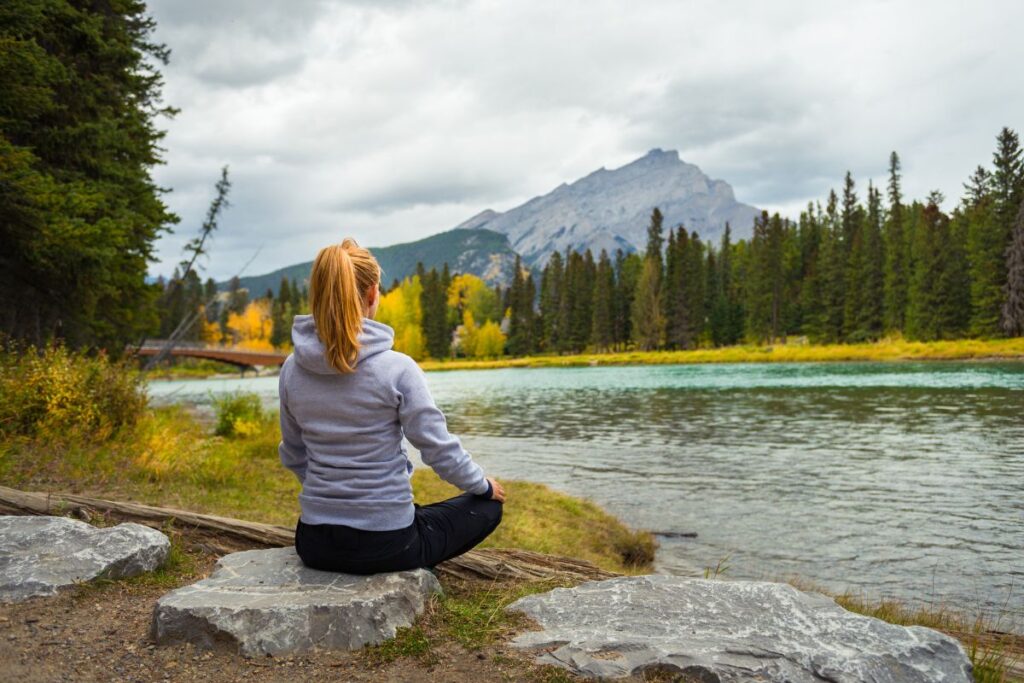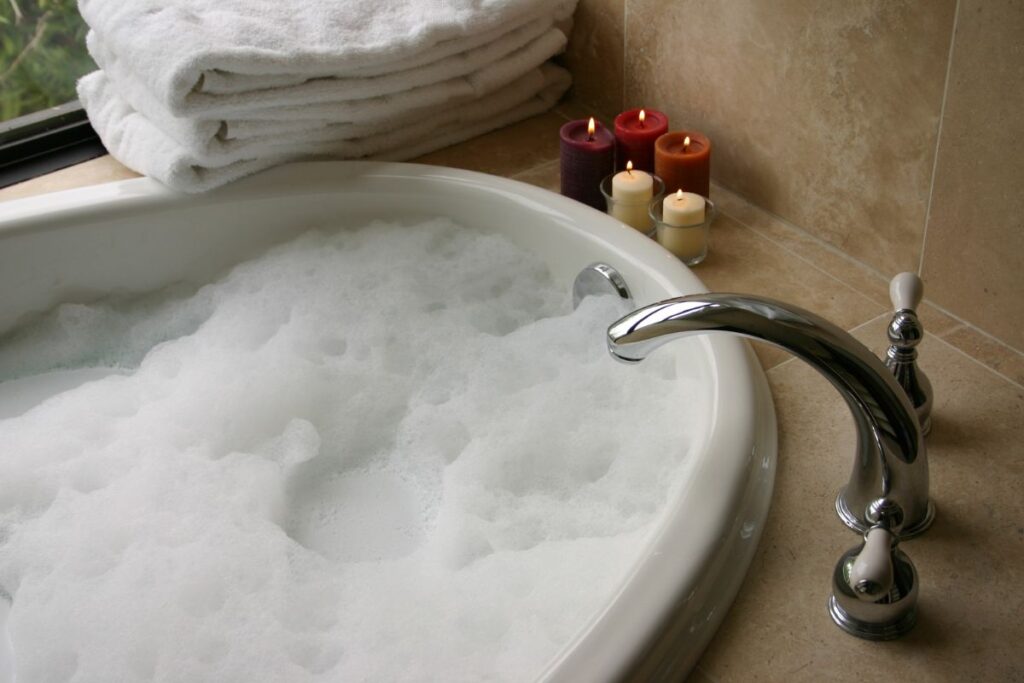Inside: Whether fall is your favorite time of the year or you begin to find yourself feeling down, here are twelve self-care practices for when the seasons change.
A guest post by Cora Gold
The end of the year is quickly approaching, with the fall and winter months leading to cooler and shorter days.
There is a lot to enjoy during these seasons, but they can also lead to some challenging thoughts and feelings.
Some people love fall and all of the pumpkin spice things that come along with it. Others have a harder time with the transition from the summer.
For some people, these feelings come from a condition that affects millions of Americans each year. Seasonal affective disorder (SAD) is a form of depression that begins at the same time every year.
Many cases start in the fall and last until spring, dampening the enjoyment of fall and winter activities.
Whether you love the fall or find it challenging, read on to learn simple self-care practices for when the seasons change to help improve your mood.

Self-Care for the Changing Seasons
The changing of seasons symbolizes a time of transition. For some that time is seamless. For others, it comes with difficulty.
If you find yourself feeling down around this same time each year, SAD or the winter blues may be a very real thing for you.
What is SAD?
Seasonal affective disorder (SAD) is a type of depression that’s typically triggered when fall starts. It can get worse in the late fall or early winter before letting up in the sunnier days of spring.
There is a milder version of SAD known as the “winter blues.” It is normal to feel a bit down during colder months where you’re stuck inside and the weather is dark and gloomy.
However, full SAD (also called seasonal depression) goes beyond this. Unlike the winter blues, SAD affects your daily life, including how you feel and think. Fortunately, treatment can help you get through it. (source)
The symptoms of SAD include:
- Feelings of hopelessness
- Increased fatigue
- Insomnia
- Mood swings
- Loneliness
- Loss of interest
- Increased anxiety
- Apathy
- Change in appetite
- Lack of concentration
- Irritability
- Social isolation
The condition is a real disorder affected by decreasing sunlight and impacts the ability to thrive during the colder, darker months. If you begin experiencing severe symptoms, be sure to talk to a health professional.
Easing the Seasonal Transition
With so many wonderful activities, festivals, and holidays throughout these seasons, it’s hard when you find yourself losing interest or separating yourself from loved ones.
The good news is that, for many, clearing their mind and practicing self-care can improve their mental health during these challenging times.
If you struggle during the changing of the seasons, being kind to yourself and making self-care part of your to-do list can make the upcoming months more enjoyable.
There are methods for everyone to find greater peace through fall and winter. Here are simple self-care practices for when the seasons change.

12 Self-Care Practices for When the Seasons Change
Improve your mood by trying some of these self-care practices when the seasons change.
1. Walking
Taking a walk is a time-tested way to clear your mind and decrease anxiety.
Exercise and movement can release feel-good hormones and reduce the number of stress hormones. By getting outside, you also get a boost of natural light, which increases vitamin D and helps stabilize your mood.
If the weather is too cold to walk outside, consider using a treadmill to keep your body moving.
2. Listening to Music
Music can have a significant impact on both the mind and body.
Research shows that music at around 60 beats per minute can help you get into a state of relaxation. Native American, Celtic, and Indian instruments are some of the best at relaxing people, but anything that makes you happy can help.
Next time you’re feeling overwhelmed, try taking a moment to lounge and listen to your favorite albums.

3. Taking a Bath
A warm bath can help your mind and body relax when you’re overwhelmed. Using your favorite products to keep clean and care for your skin can combat the impacts of stress.
Light a candle or use a diffuser near your bath to get aromatherapy benefits while you soak. After spending time in the warm water, you can exit feeling both relaxed and pampered.
4. Meditating
Meditation is a wonderful skill that can help you healthily process your thoughts and feelings, leading you to clear your mind and feel more relaxed.
There are different types of meditation you can engage in, including guided meditation which teaches you how to meditate and helps you stay focused.
There are various apps, such as Calm, and online resources can help you start your meditation journey.

5. Being Mindful
Mindfulness is focusing on the moment instead of worrying about the past or future. Practicing it can help you clear your mind of the outside thoughts and feelings that can overwhelm you and make you feel down.
Focus on what you’re doing and why, whether making dinner, shopping, or typing a report. It can take some practice, so don’t feel bad if it takes a while to master.
Meditation and journaling can help you be more mindful, so try out different practices and see what works for you.
6. Doodling
If you’ve ever found yourself doodling on a piece of paper, you might have noticed that you feel calmer or that it helps you concentrate.
Doodling promotes mindfulness and deep thinking, allowing you to process your thoughts. You can draw your feelings or just let your hand move the pen or pencil around.
You can doodle in a notebook or invest in a Buddha board that you can reuse.

7. Taking a Nap
There’s a reason people like to “sleep on” big decisions. Taking a nap can help you clear your head and put you in a better mood, helping you calmly and confidently make decisions.
You want to ensure your naps last between 10 and 20 minutes to avoid potential adverse effects. Nap in a dark, quiet place so your mind can decompress.
By making room in your schedule for napping, you can retain memories, process thoughts, and feel more mindful.
8. Unplugging
When you remove yourself from your electronic devices, you remove the stressors that come with them.
The blue light from phones and tablets can increase levels of stress hormones.
Social media can also lead to feelings of insecurity caused by exaggerated posts. It also can cause the fear of missing out when you see friends and family members going on trips or participating in activities.
Use the time you would normally spend on your devices to draw, meditate, or get out in nature.

9. Journaling
Journaling is an excellent way to process your thoughts and clear your mind of the stresses and worries that come with the change in seasons.
You can choose to write about a specific concern or just release your stream of consciousness. Writing things down can help you get something off your chest.
By writing down your thoughts and emotions every day, you can also identify negative thinking patterns that you can work towards eliminating.
A paper journal tends to be better, but even writing things down on your phone or computer can benefit you. If you’re not sure where to begin, start with these mindful journaling prompts.
10. Spending More Time Outside
Even if you’re not going for a walk or a run, spending more time outside is great for your physical and mental well-being.
Getting fresh air can help to alleviate stress and give you a greater sense of peace and calm.
We’ve become a culture that is used to spending the vast majority of our time indoors. Getting outside more takes effort and intentionality, but the benefits are definitely worth it.

11. Clearing the Clutter
Since you’re spending more time indoors in the cooler seasons, make your home a place that you enjoy being.
Get rid of the excess stuff and make your home your sanctuary. Let go of the clutter that is causing you stress.
The things you love most get to take center stage when you clear the clutter out of the way.
Decluttering your schedule
Clutter isn’t just the stuff in your home. It can slo show up in your schedule.
The transition from the warm weather and potentially more relaxed schedule of summer to cooler weather and a busier schedule in fall can be a rough one.
If you’re feeling overwhelmed by your activities and obligations, consider how you could declutter your schedule.
Opting to have a slower schedule can be very beneficial for your physical and mental health. Not running from one thing to the next will help to relieve some of your stress.
See what you can cut out to embrace elements of slow living to your life in the coming season.
12. Making a Bucket List
To practice self-care when seasons change considering creating a bucket list of things you would like to do.
Even if the upcoming season is not your favorite time of year, having planned activities that you would enjoy will give you activities to look forward to.
Not sure where to start on your bucket list? Check out these posts to help:
- Simple and frugal fall activities
- Frugal family Christmas traditions
- Simple summer activities to enjoy as a family
Practicing Self-Care As the Seasons Change
As you move through the fall and winter, you may feel more stressed and overwhelmed than at other times of the year.
Whether you experience symptoms of seasonal affective disorder or just feel a little down from time to time, it’s important to care for yourself and clear your mind of negative thoughts and feelings.
There are several ways you can relax and unwind when things get stressful, helping you to enjoy yourself more during these times of the year.
If you try these methods and still struggle, consult a doctor or psychiatrist about possible treatments that will get you feeling your best as the seasons change.

Cora Gold is the Editor-in-Chief of Revivalist magazine. She loves writing about family and living life to the fullest. Follow Cora on Twitter, Facebook and Pinterest.
What’s your favorite self-care practice when the seasons change? Share it in the comments section below!
Sign up on the form below to get weekly decluttering and simplifying inspiration sent straight to your inbox. You’ll also get the free 8 Quick Wins for Decluttering Worksheet to help you start to simplify your life today.


I love all your tips. it gets my mind going in a positive direction.
Thank you for your organized suggestions.
I love this list, so many great practises. Thank you for the reminder to slow down.